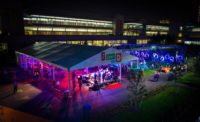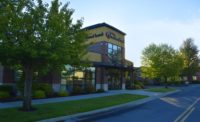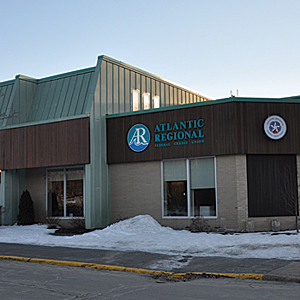
|
When people think about financial security, they envision big banks in large cities across North America leading the way, but in the thinly populated state of Maine, more famously known for lobster, Atlantic Regional Federal Credit Union (ARFCU) is also on the leading edge with its new video system. Started in 1941 with 37 member customers, today ARFCU has 80 employees and is one of the largest credit unions in the state.
In 2009, when ARFCU was building its newest location, Rob Simopoulos from Advance Technology, Scarborough, Maine, reached out. ARFCU had analog-based security systems in its other locations that were more than a decade old. The old system included black-and-white cameras producing grainy images and had two DVRs per location. Frustrating to the user, the system only allowed video to be viewed by logging in and out between the two DVRs. This made it extremely challenging to conduct investigations. This old system gave one frame per second from the cameras behind the tellers, which couldn’t record much of the financial transactions, never mind provide any forensic information. Along with poor resolution, it was hard to find stored video.
Steve Van Rensselaer, vice president of marketing/facilities manager, and the IT systems administrator, Travis Bean, led the new location’s security project. Van Rensselaer’s marketing concerns were the potential brand damage faced from a robbery, as well as the risks to employees’ safety.
“As a policy, tellers’ drawers have limited cash, but a robbery would be stressful for both our staff and our members,” he explained.
Another large concern was disgruntled members’ behavior. On occasion members had argued, threatened, and made rude gestures to employees.
“We’ve had angry members come back into a branch stating they didn’t receive their requested money. We’ve even had to ask members to take their money and leave over argumentative behavior,” Bean shared.
ARFCU’s management team wanted cameras everywhere to manage these issues, so they worked closely with Simopoulos to design a superior system.
To alleviate customer disputes, Advance Technology installed one-megapixel cameras above each of the deal plates at the teller stations and at the drive-up window to provide a clear image of currency and checks. The video system allows ARFCU video users to digitally zoom in on stored video, clearly seeing the denominations of the bills provided to a customer should there be a question or dispute.
Another challenging area to see or record was the transaction plates at the drive-up window, especially at the vacuum tube areas. Essentially the driver’s seat of the car is the transaction area. The team incorporated a high-definition, megapixel camera that looks directly into the driver’s seat at the teller window. They also placed a similar camera at the vacuum tube. The camera’s pendant style installation from the canopy at vehicle window height provides clear video images of every drive-up transaction.
Bean recalled, “Once a member returned to the bank saying she didn’t receive her money and when we viewed the video, we saw that she had dropped the money between the seats.”
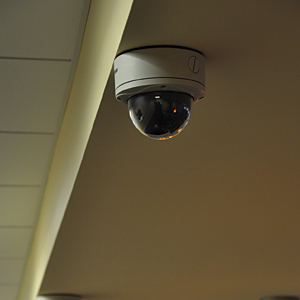
|
Occasionally, a member doesn’t know where they put their cash or they are confused about the denomination of the bills received. These megapixel cameras allow the credit union to assist their members in discovering exactly where they placed their money. They can show the member that they put it in their wallet, pockets or carried it out to their car in their hands. This has defused disgruntled behavior, assisted ARFCU in resolving issues, and improved member loyalty and appreciation. The tellers are safer and happier as a result.
ARFCU has five-megapixel cameras behind the tellers facing the member and providing coverage of the lobby. One five-megapixel camera is used to cover two teller stations. “We lowered the customers’ installation costs by installing one five-megapixel camera in place of two or three VGA cameras,” Simopoulos described.
All the cameras have storage-saving H.264 compression, at seven frames-per-second of recording.
“We have 90 days of storage for our indoor cameras and 14 to 21 days for our outdoor cameras. We can mask image areas on our outdoor cameras providing privacy for our neighbors. Due to the system’s open architecture, we choose to use our own Linux servers to record and manage the cameras. This system is easy to use and it takes me two minutes to train anyone on how to use the system,” Bean said.
Advance Technology tapped its audiovisual division to set up monitors in each manager’s office and the lunch rooms. This provides employees full view from the cameras and helps provide additional eyes on the lobbies. Simopoulos explained, “The distance from the NVRs to the monitors was past the limitation of HDMI cables, so we implemented a Cat-5 transmitter/receiver system to get the video to the monitors.”
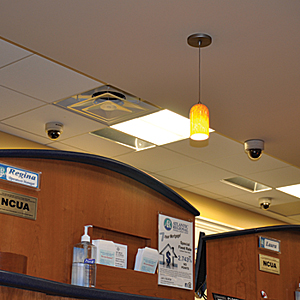
|
ARFCU’s system is used operationally as well. Managers from the head office look into a branch before calling; if it’s busy they call later. Users watch traffic patterns per location, examining ways to improve services and ensure the appropriate staff is on hand. “All our branches are fully connected over our network, using this same system. We basically have an enterprise-level system and use a network security partner who’s entrenched in Internet security for banks,” Bean describes.
ARFCU’s staff is fully aware of the cameras and the protection they provide. Today, they are on board with the system, after initial concerns were dissolved.
“The more eyes that are monitoring, the safer the bank, our customers and employees are,” Van Rensselaer said.
Today every branch has the system Simopoulos designed. “The system costs between $60,000 and $70,000 per branch, which is not a little investment. The board of directors and executives are fully on board and spent this money to keep our staff and members as safe as possible. But in the end, we have two times the cameras for the same price we paid for our old system, with far more functionality. Given the pace of changing technology, we expect we’ll need to upgrade our systems every five-to-seven years,” Van Rensselaer said.
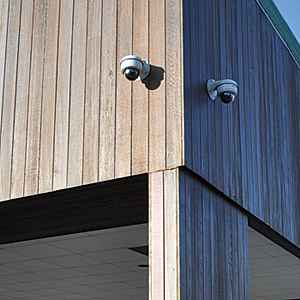
|
ARFCU has future expansion ideas including installing license plate cameras and facial recognition software at some point in the future. “We’d like our tellers to say ‘Good morning, Mrs. Jones, how are you today?’ after gaining this information from our video system,” Van Rensselaer explained. “We don’t want to be a set of ATMs or machines doing business with our members; we want to be people, working with people. Our records may be more important than personal medical records, as we deal with people’s money!”
CRITICAL INFASTRUCTURE
Distributor’s Supply Chain Connections Create Security for Largest U.S. Refinery
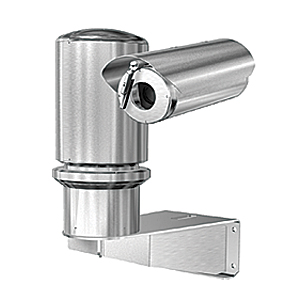
|
Motiva Enterprises LLC, located primarily in the eastern and southern United States, operates three oil refineries that convert approximately 740,000 barrels of crude oil into usable gasoline daily for Shell-branded gasoline stations. In 2007, Motiva began a five-year expansion project to increase its capacity and minimize emissions. Motiva initially utilized Graybar, St. Louis, to source voice and data network products throughout the refinery, but given the size and scope of the project and the number of contractors involved, Motiva also needed to secure the property with 24-hour surveillance.
As a distributor of electrical and communications products, supply chain management and logistics services, Graybar connects its customers with a variety of solutions — including video surveillance, access control and fiber optic systems — and stocks them throughout its more than 240 locations in North America. Graybar’s national network of branch locations provided the logistics platform necessary to address the full range of Motiva’s needs. From there strong relationships throughout the supply chain, including with integrators, enabled Graybar to bring together the products, talent and resources Motiva needed.
Graybar Beaumont Sales Representative Pete Richards worked with the installer and manufacturers of Motiva’s voice and data networks. As construction progressed, Richards stayed in close contact with a variety of bidders and procurement firms associated with the project, to ensure Graybar’s ability to provide a consistent product set and level of service. When the challenge of adding a security solution arose, Richards introduced Motiva to Pelco, Clovis, Calif. Pelco’s video surveillance solution, the ExSite series of explosion-proof camera systems, was specifically designed to meet the rigorous requirements for hazardous locations, making it a great fit for Motiva.

|
Graybar then leveraged its network of relationships with installers from Louisiana and Texas to arrange the installation of Motiva’s expansive surveillance and security system.
“Graybar has focused its efforts on understanding the needs of the end user, assisting them in developing solutions to their problems and pulling that opportunity through the channel to our dealers and integrators,” said Gerry Kollar, director, business development, Graybar.
“We also understand that dealers and integrators are under pressure to do more with less, and we constantly look for innovative ways to increase efficiency, quality and reliability, while reducing our customers’ total cost of doing business,” Kollar added.
To ensure 24-hour video surveillance of the 3,600-acre property, Graybar procured eight Pelco ExSite cameras along with related fiber optic cabling. Although the facility is large in size, the solution enabled Motiva to save the time and money it would have spent employing a security staff to patrol the facility.
The refinery expansion project, which was completed in May 2012, allowed Motiva to boost production of its Port Arthur refinery to 600,000 barrels of crude oil a day, enabling the facility to become the largest of its kind in the United States and one of the top 10 largest refineries in the world.
Graybar’s cost-effective security solution continues to monitor the 3,600- acre property today.
“This was truly a community effort that involved so many people and businesses in southeast Texas,” said Motiva CEO Bob Pease at the Port Arthur completion celebration.
“The tremendous talent and skill of the employees and contractors who worked on the expansion, day in and day out; the quality of products and services provided by local suppliers; the enthusiasm and support of public officials and local community — all of these contributions came together to make this project a success.”
PROJECTS in the News
Lumidigm announced that Alfapass, the provider of the security smart card system at the Ports of Antwerp and Zeebrugge in Belgium, is replacing the older biometric system at the ports’ registration stations with Lumidigm V-Series multispectral imaging fingerprint readers. The Port of Antwerp is Europe’s second-largest port, while Zeebrugge is the central port for Europe’s automotive industry and has the largest liquefied natural gas terminal complex in Europe. Alfapass is now in the process of enrolling 17,000 truck drivers and 10,000 longshoremen at the two ports on the new system.
The solution is a single ID card that covers all facilities rather than a different entrance card for each company at the port.
■ ■ ■
MOBOTIX announced that the Iowa 80 Group, a chain of the largest truck stops in the world, installed a comprehensive MOBOTIX IP surveillance system at its Kenly, N.C., location. With the remodeling of the truck stop in Kenly, the Iowa 80 Group seized the opportunity to scrap its analog-based system to test an IP-based system that could provide a blueprint for use in its other locations. Dakota Security Systems won the bid for the project and developed and installed a surveillance solution consisting of MOBOTIX cameras and Dell servers for video storage. Dakota Security Systems installed MOBOTIX Q24 cameras, compact IP cameras that leverage MOBOTIX’s panoramic software to create a 360-degree field of view. Dakota Security Systems also leveraged Q24s in Iowa 80’s retail shops, where the streamlined esthetics helps the cameras blend in to the environment.
■ ■ ■
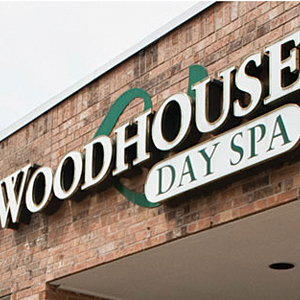
|
IQinVision announced that The Woodhouse Day Spa, in Ft. Wayne, Ind., deployed IQinVision megapixel cameras at the facility to enhance guests’ security and overall quality experience. Homeland Technology Group was the integrator for this project. Now, the Woodhouse Day Spa has 34 IQeye megapixel cameras deployed in public areas, at the check-in and check-out counters, in the retail shop, laundry room, and outside the front entrance of the 10,000-square-foot facility (no cameras are installed in any treatment rooms). Video from the IQinVision cameras is managed by Exacq Mobile video management software. The system is utilized 90 percent of the time for live monitoring and the balance for incident review.
■ ■ ■
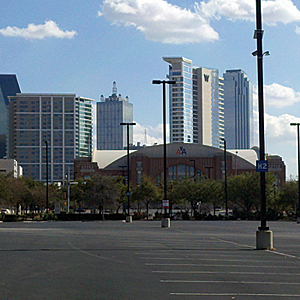
|
MicroPower Technologies Inc., a provider of wireless surveillance solutions, announced that the American Airlines Center selected the MicroPower Helios™ solar, wireless surveillance solution for its parking lot and perimeter surveillance. Located in Dallas, the American Airlines Center hosts the Dallas Stars hockey team, Dallas Mavericks basketball team and countless entertainment events. Joe Heinlein, IT director, American Airlines Center, sought a surveillance solution to monitor 13 access points within the facility’s surrounding parking lots.
“We wanted greater security for both customers and venue employees, while gaining better visibility of parking collections to compare vehicle counts with parking revenues,” Heinlein said. “We needed a surveillance camera placed directly at critical points of interest to transmit real-time video back to a central monitoring location. Because the parking lots are covered in asphalt and cement, and some are as far away as a quarter-mile from the center, trenching and running cables was extremely cost-prohibitive.”
Heinlein, working with systems integrator Global Security Integration, determined that MicroPower’s solar, wireless surveillance solutions was the ideal option for those specific requirements.
“We realized we might have an issue with cash parking collections as we were blind to the numerous transactions at remote locations taking place at one time. Our parking situation was also in a state of flux due to new construction in the immediate area,” said Brian Bowen, vice president of finance, American Airlines Center. “Cabling and trenching were expensive options and coupled with current dynamics, we needed an alternative that was somewhat portable. Since the MicroPower solution has been in place, the cameras have exposed and changed employee behavior, and cash collections have increased. The MicroPower Helios system provides an immediate and significant return on investment for the American Airlines Center. We also have a cost-effective means to move cameras as our parking situation changes.”
■ ■ ■
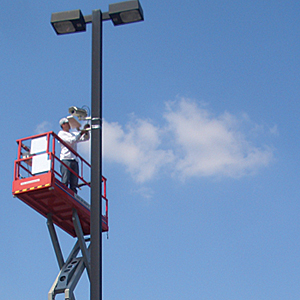
|
The Isabella Stewart Gardner Museum in Boston recently awarded Security-Net member CGL Electronic Security with a contract to install an integrated C-Cure 800 security management system manufactured by Software House. Norwood, Mass.-based CGL Electronic Security has been designing, installing and servicing access control and security management systems since 1998.
Housed in a brilliant Venetian-style palace, the Isabella Stewart Gardner Museum provides a unique backdrop for the viewing of rare and decorative art from some of the world’s most recognized artists, such as Rembrandt, Michelangelo, Raphael, Botticelli, Manet, Degas, Whistler and Sargent.
According to Mike McGuirk, CGL Electronic Security’s sales manager, an installation of this type presents a number of challenges, the most demanding being project coordination and execution. “Because the museum is to remain as a Venetian-style palace with everything in place as it was originally established, we needed to plan and execute accordingly,” McGuirk said. “In an effort to assist in the upgrade of the entire video system, we deployed some of the industry’s latest security technologies in a century-old museum, itself a work of art, protecting some of the world’s most famous artworks and master paintings.”









